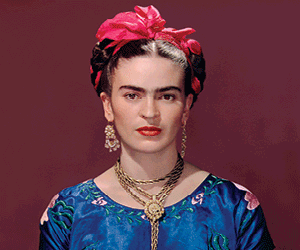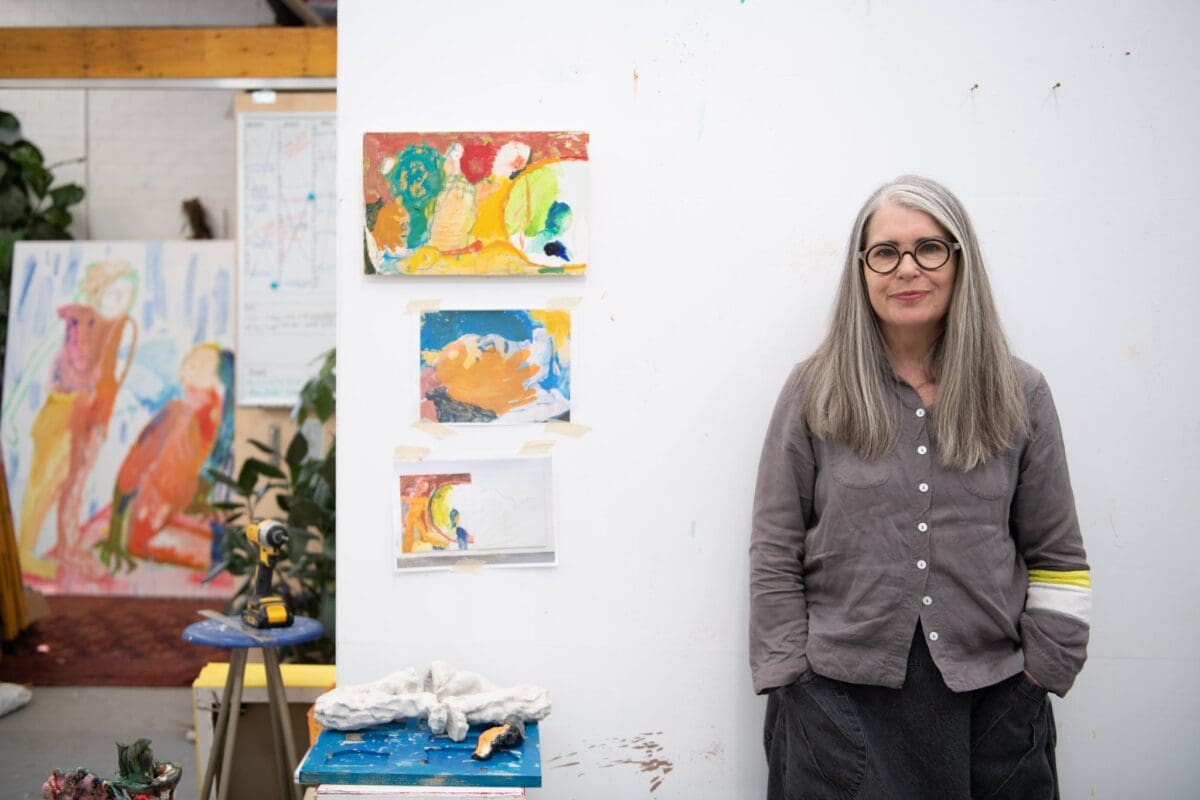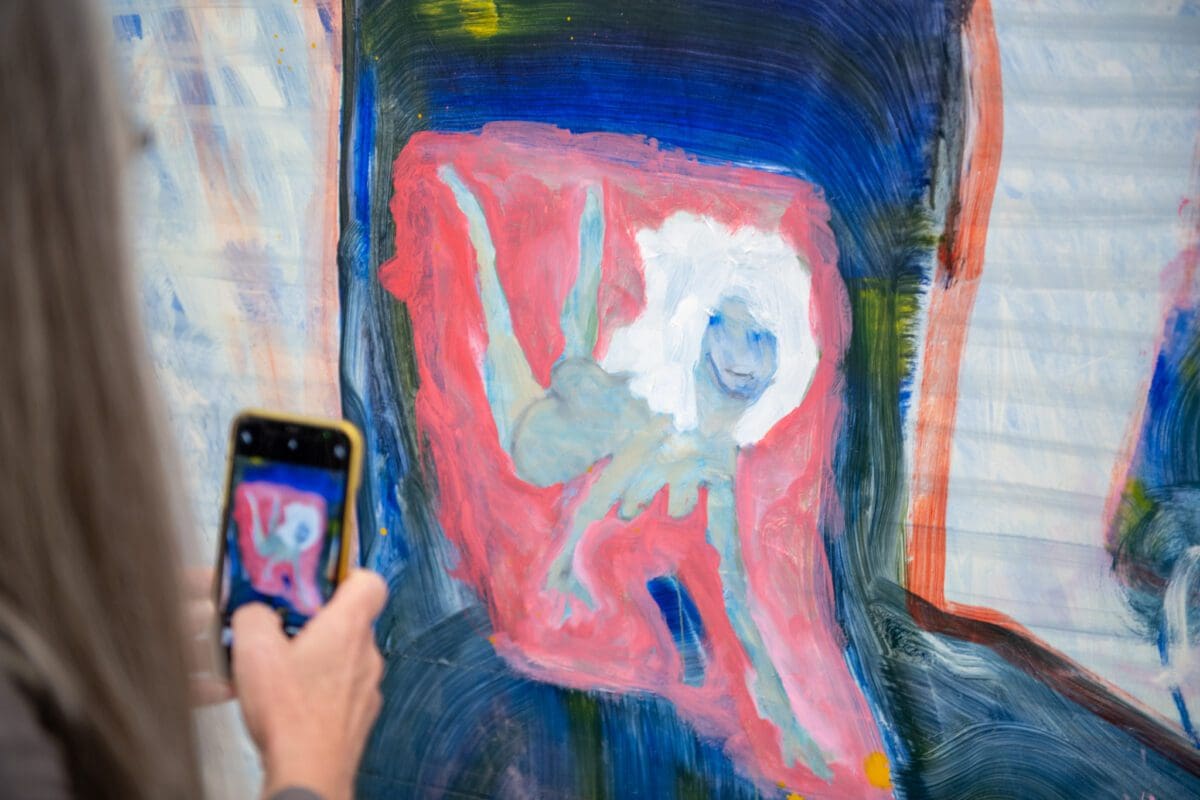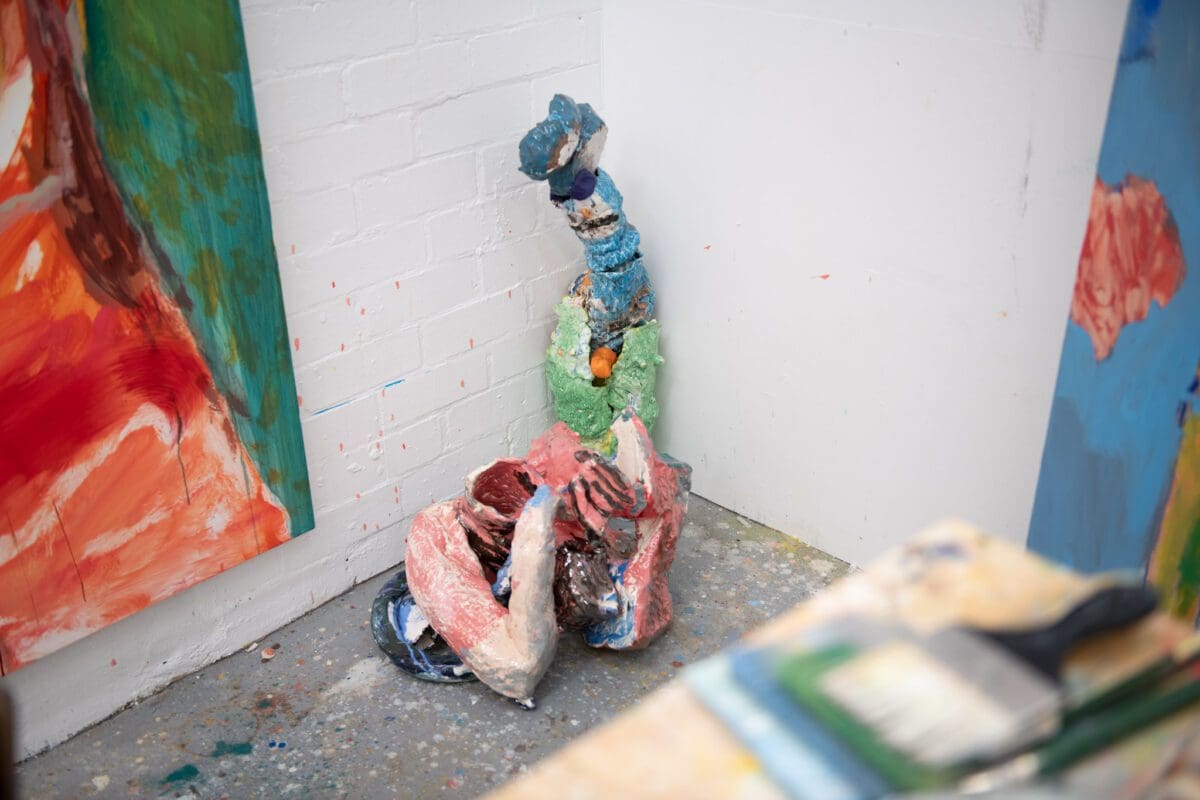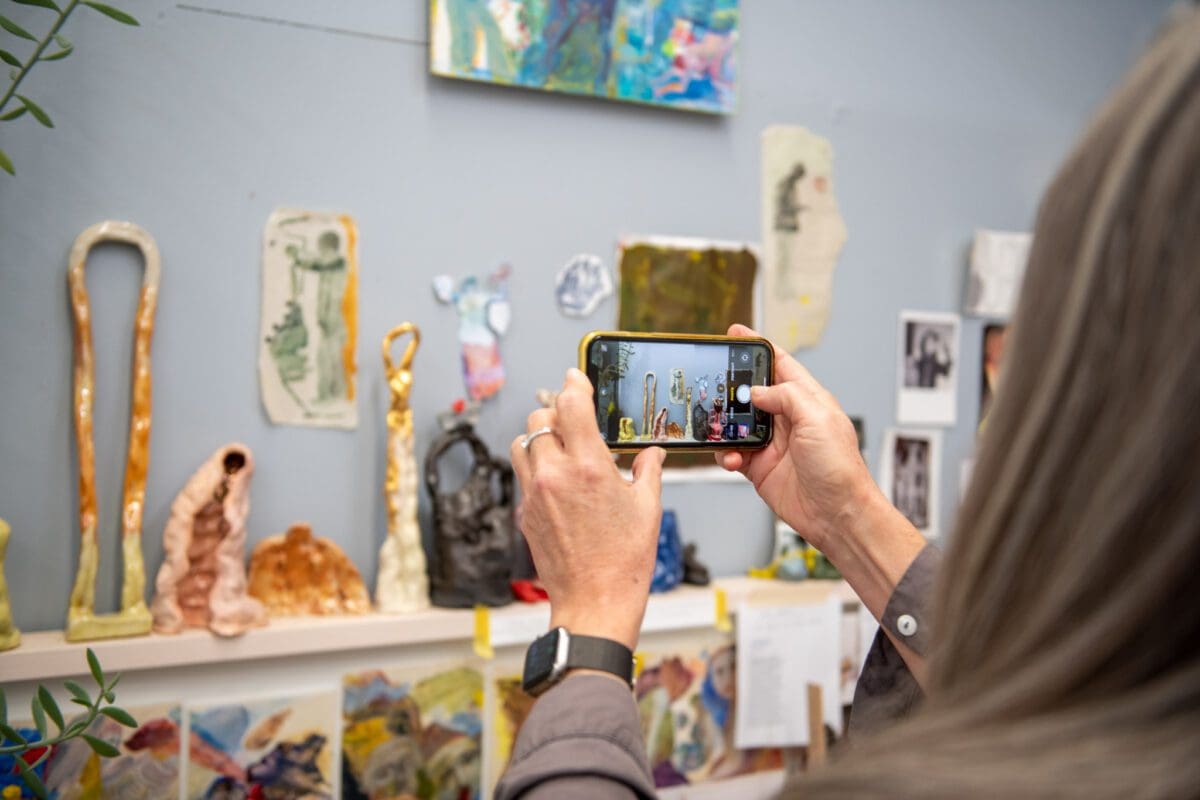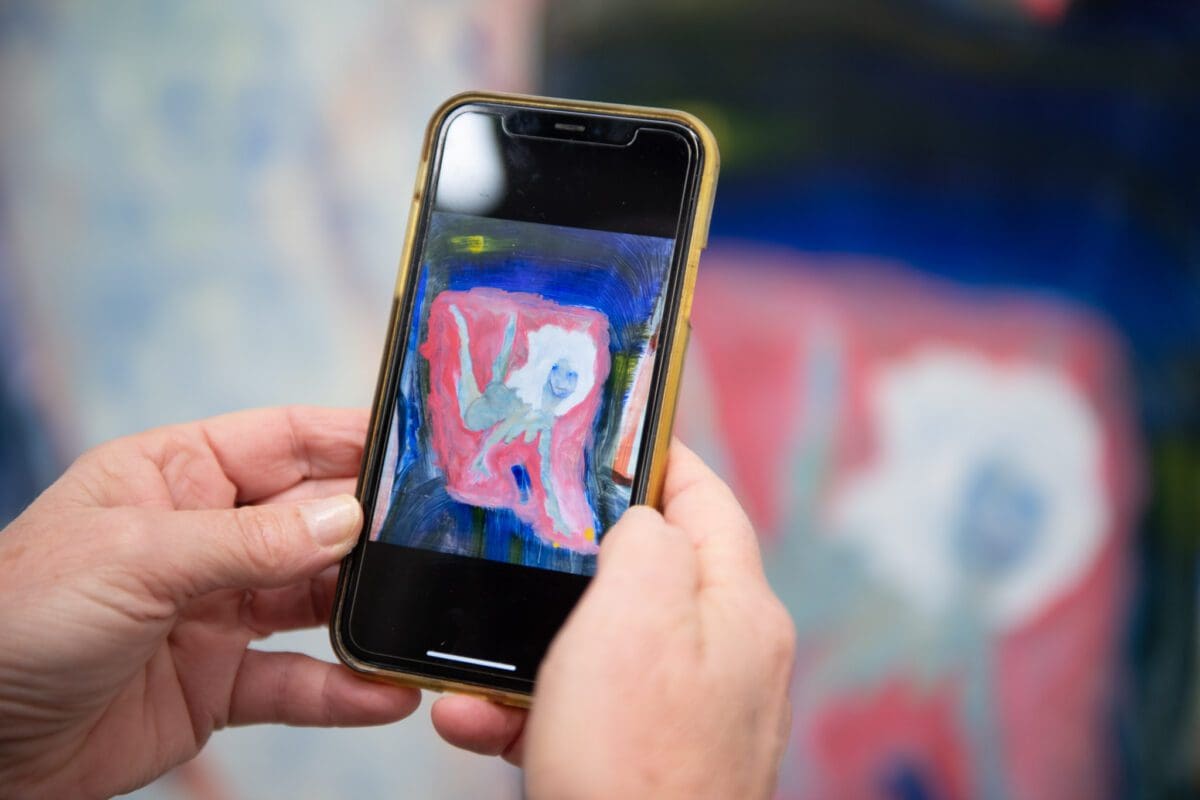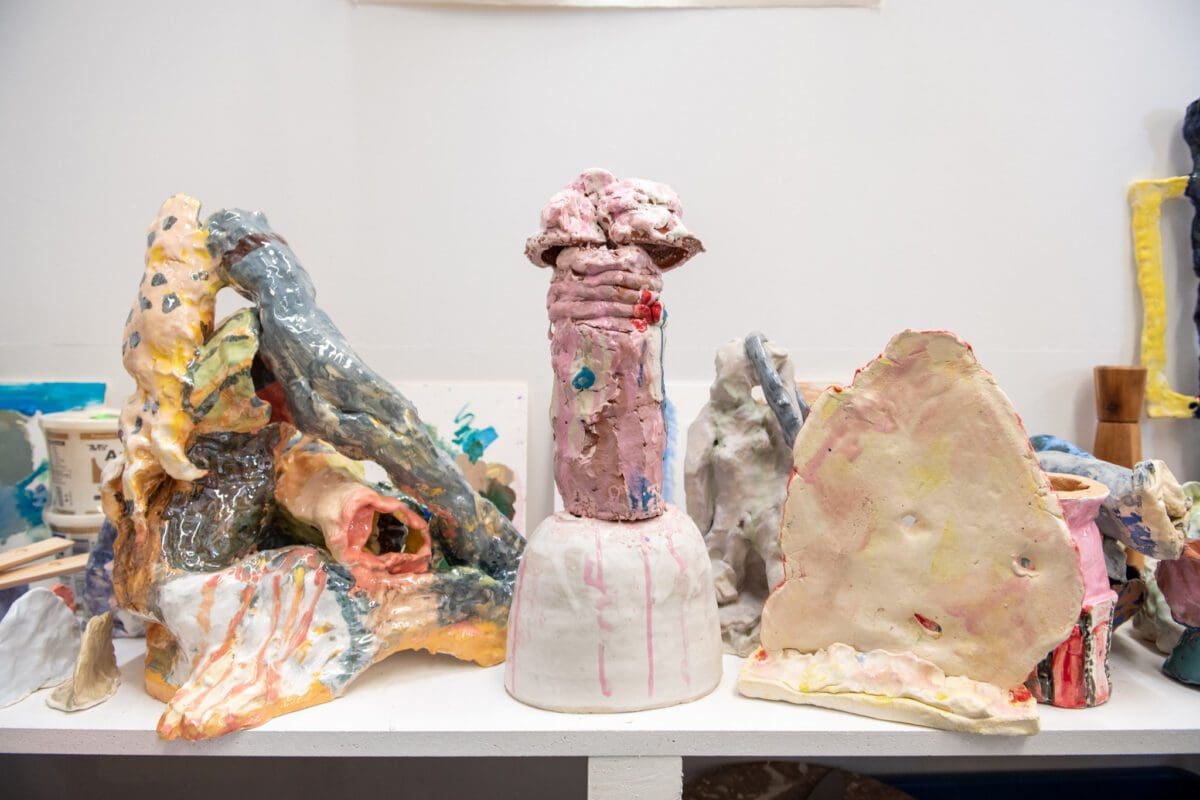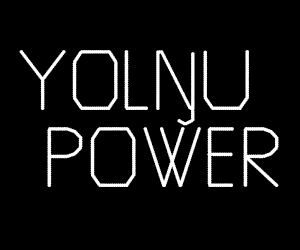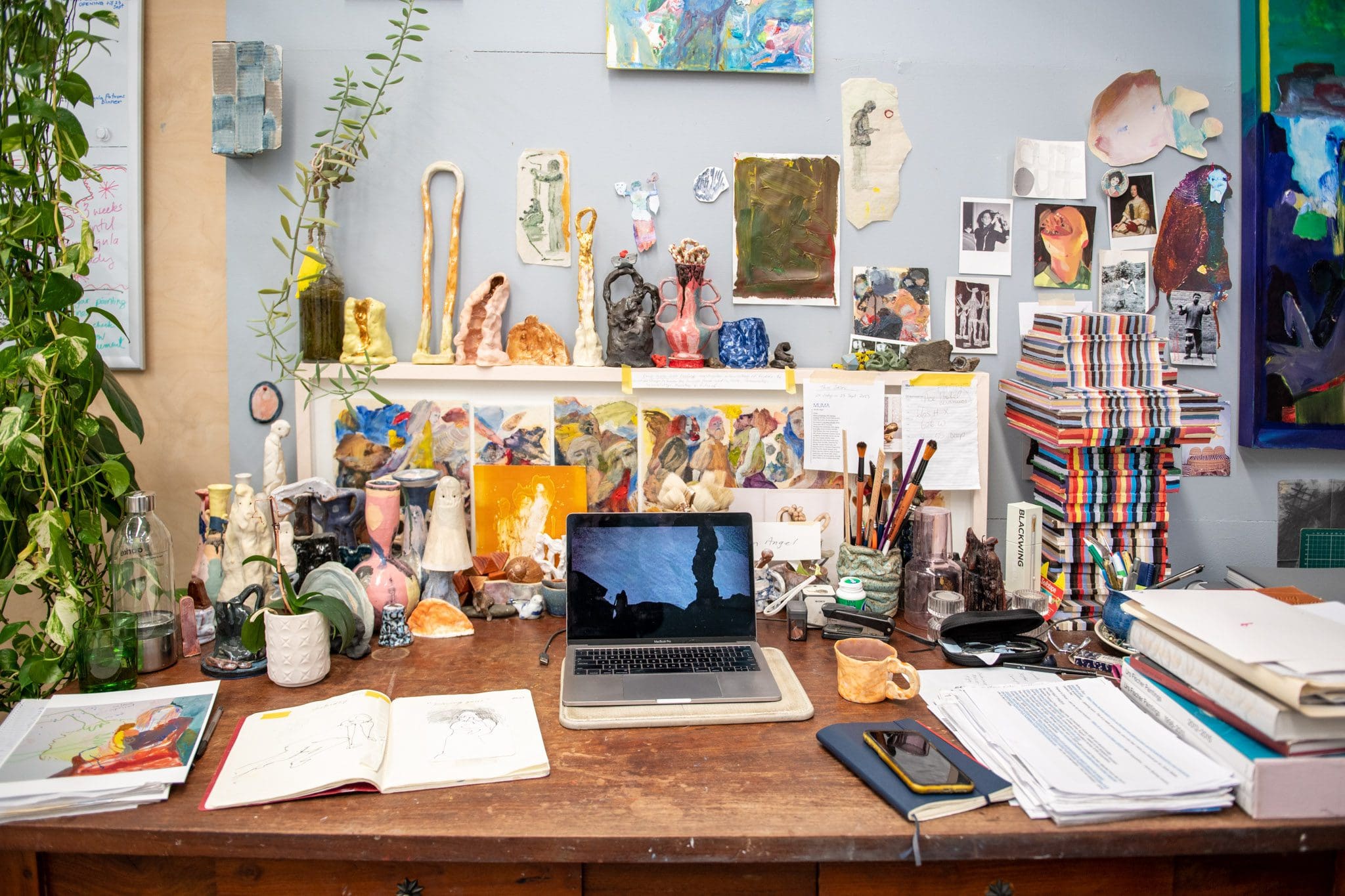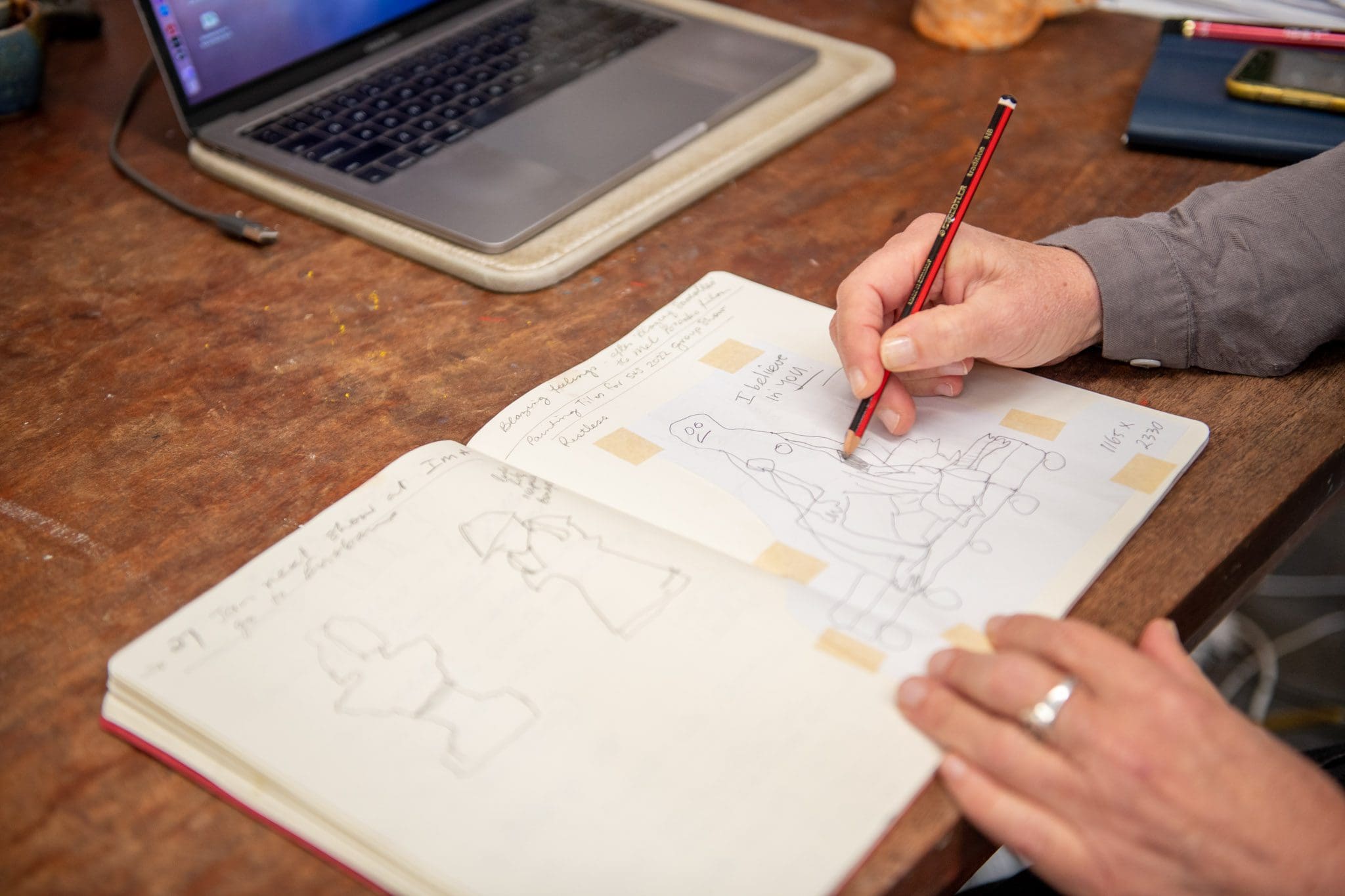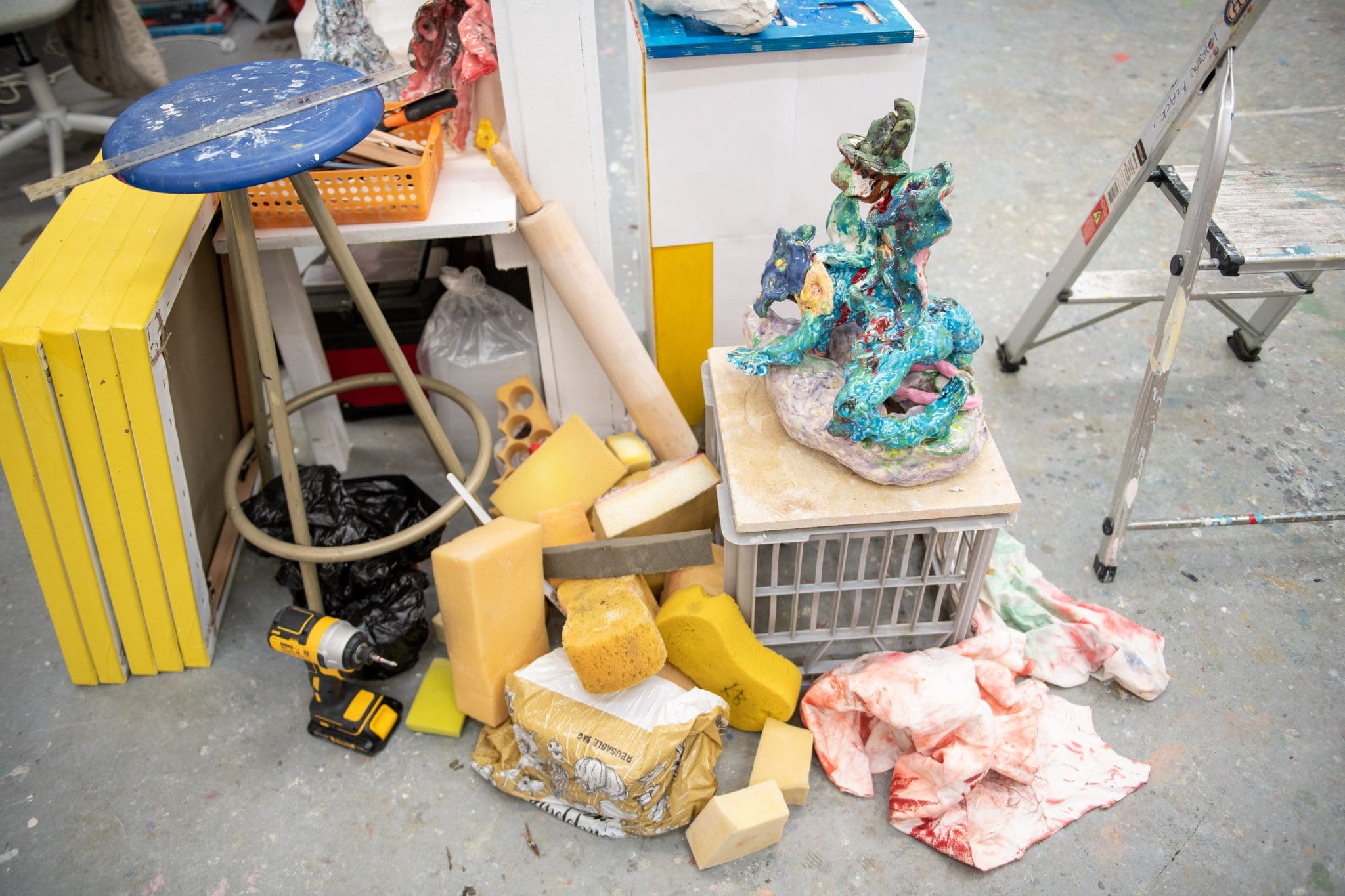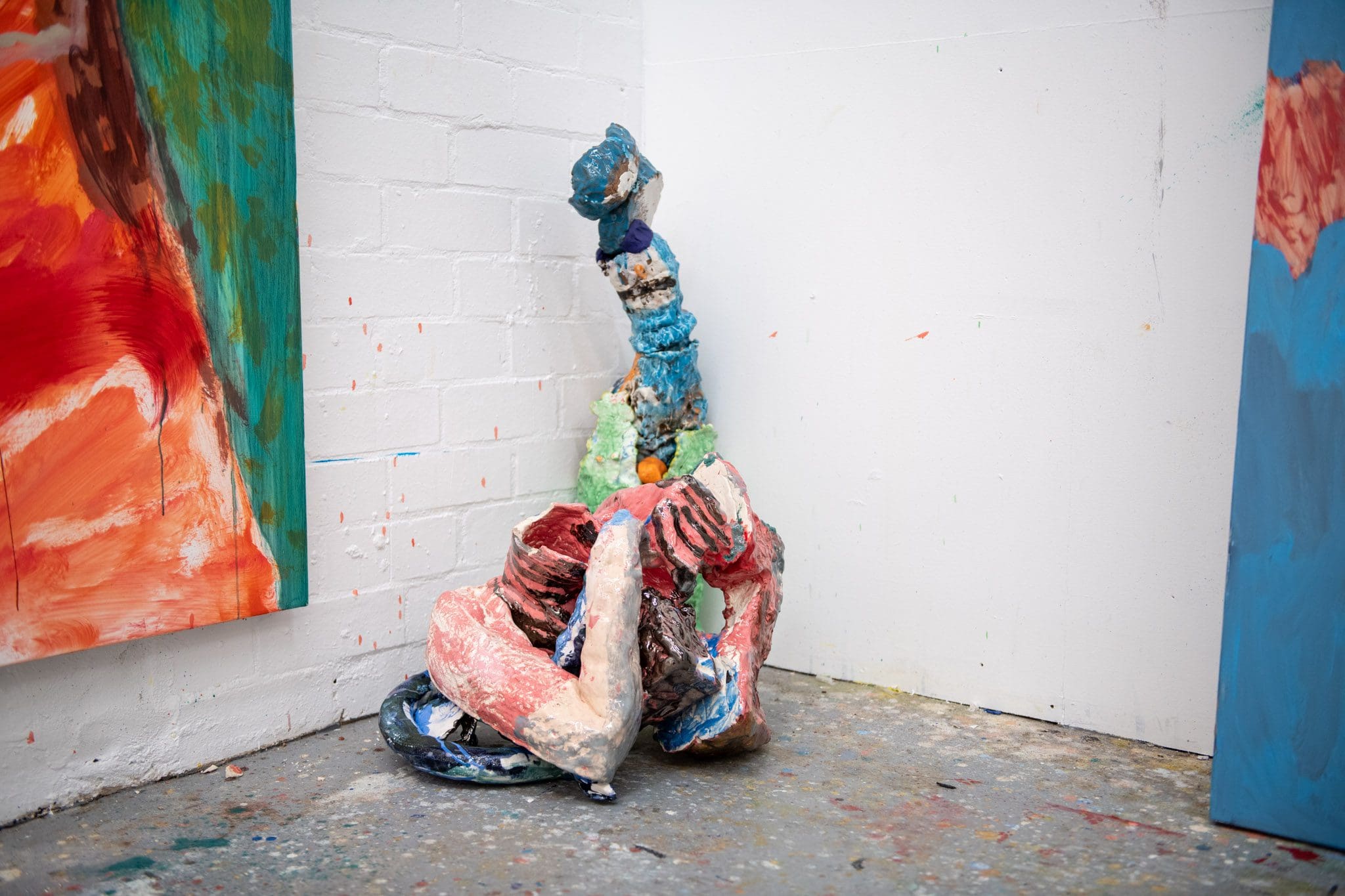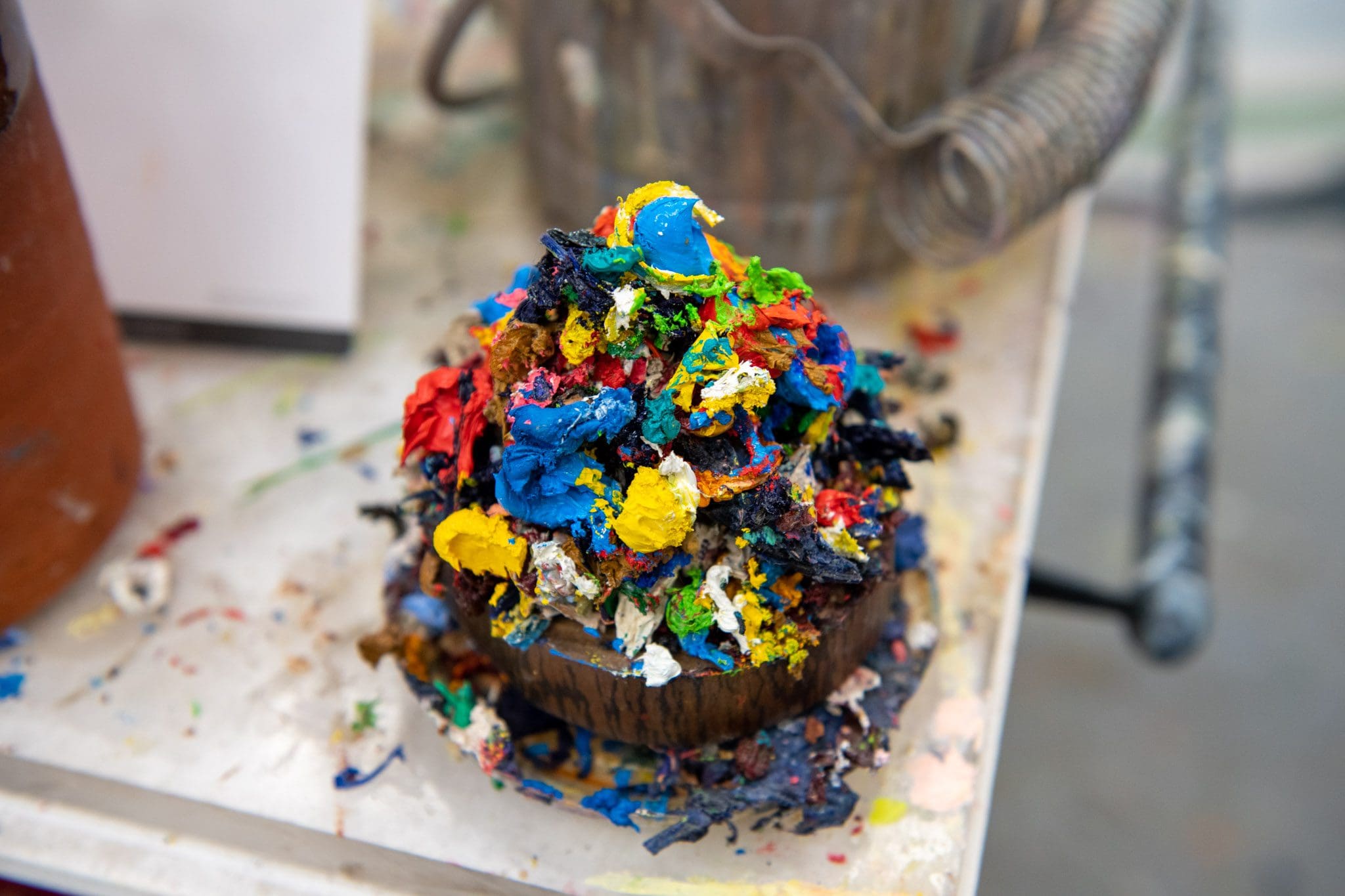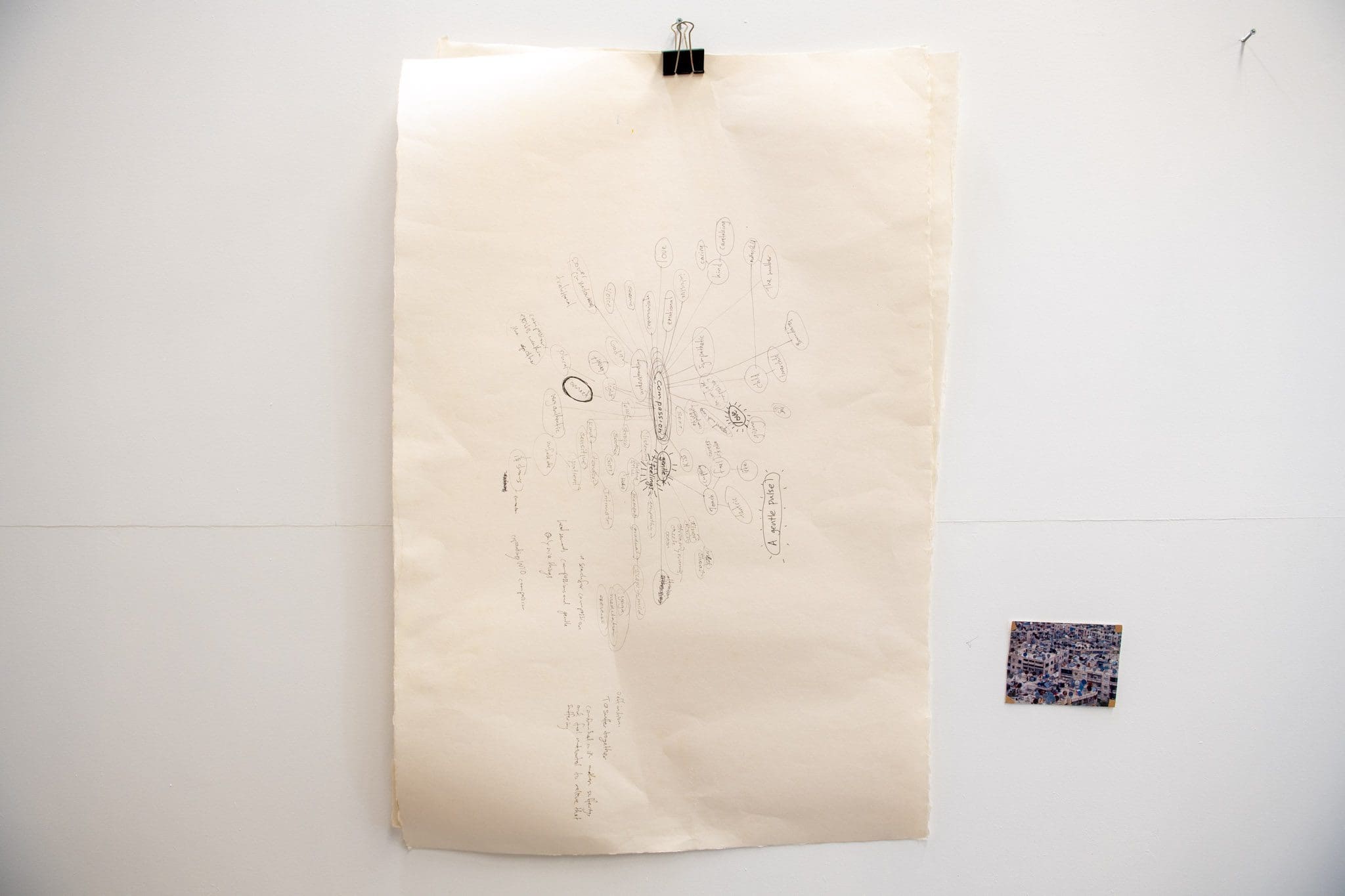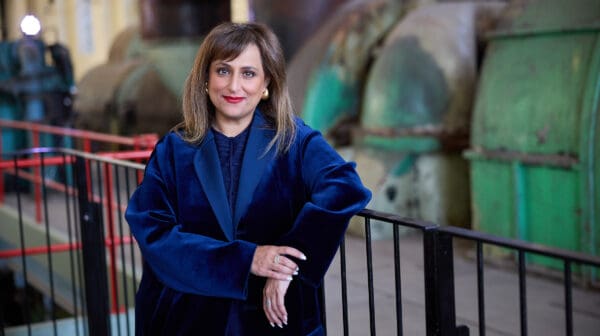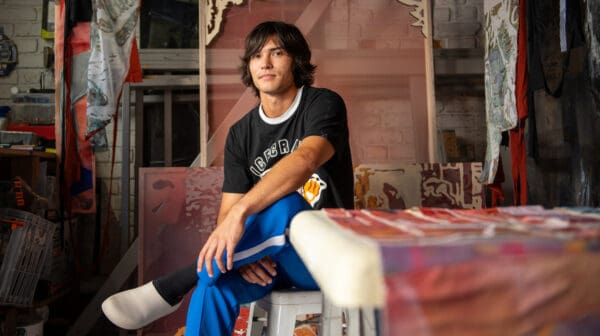Karen Black investigates the complexity of self and human interaction. Figures, self-portraits, monsters, goddesses, asanas, angels and demons make their way onto her canvases, appearing both familiar and strange. In the act of painting, Black’s abstractions explore various emotions while also dismantling hierarchical social dynamics.
Ahead of the Sydney-based artist’s showing at Ngununggula in the Southern Highlands and Monash University Museum of Art in Melbourne (the latter curated by Jennifer Higgie), we visited her inspiring Marrickville studio.
Here, Black speaks about feelings such as gentleness and compassion, as well as notions of self-care and head space. In her latest work, the artist has undressed the inhabitants of her paintings, suggesting that she is ready to reveal and examine deeper layers of the human experience.
Karen Black: I have been in my current studio in Marrickville for four years now, since moving to Sydney in 2019. For many years I had a home-based studio, and when I had smaller children, everything was structured around their routine. I would finish in the studio by 5.30pm so I could make dinner, and after they went to bed, I would go back to the studio around 9pm. It has taken me a few years to change that pattern, but my routine is more structured now, and I usually work from around 10am to 6pm. I am also trying to put more time into my life and my friends; I try to get out more and see shows, have people for dinner and socialise more. I mean, my work is about the emotional side of people and how they interact with each other, so I feel it is important that I am part of these conversations and dynamics.
“The titles of my works can come from old diary entries or research. I like the titles to add to the works, so there is another layer for the viewer to unravel.”
Karen Black: When it comes to process, my research is primarily based on reading and writing. I see faces everywhere, and figures in everything. I usually work across a few paintings at the same time, and ceramics are also part of my practice. They help inform my paintings, and vice-versa. I like to use costume and posture to elevate the feeling of the figures or faces in my paintings. I mix up the body with other ideas and feelings, and more recently I have also undressed the body as I am exploring yoga poses.
The titles of my works can come from old diary entries or research. I like the titles to add to the works, so there is another layer for the viewer to unravel.
The way that the painting reveals the brushstrokes is also important to me, and when it comes to colours, I always mix my own, starting with red, blue, yellow and white as a reducer. Every colour that I use is part of a conscious process.
For Gentle Pulse, my last solo exhibition, I made a large raw clay sculpture in the gallery space which needed daily care to avoid cracking. It felt liberating to ask for help and receive it back. Conceptually, the sculpture was about self-care and caring for others, gentleness and compassion. And I think that moving forward, I am also talking about softer brush strokes, exploring a more meditative practice where I gently put paint on the surface, and I drag it across the canvas in various ways. I am currently bringing these ideas closer to myself as a woman, as a painter; rather than trying to change the world, I am trying to make a difference as an individual and trying to evolve as a person.
Karen Black: I am preparing for two upcoming exhibitions. First, a show at Ngununggula in the Southern Highlands, Once more with feeling, which is curated by Megan Monte and Milena Stojanovska. For the first time, I am leaving a lot of white space on the canvas to investigate the idea of head space. One of the paintings is called The Changing Mind, which is also the name of a book I have been reading by Daniel Levitin, who is a neurologist and a cognitive psychologist, and it explores the power of the ageing brain.
“The painting that Jennifer Higgie has chosen is titled My head is a mountain, my heart is a sea. “My head is a mountain” giving rise to thoughts, memories and beliefs, spirituality and contemplation. Mountains have an element of endurance, beauty and wonder about the natural world.”
I am terrified of white space, it makes me feel very vulnerable, so conceptually I am pushing myself and saying, “It is okay to be vulnerable and it doesn’t matter if people don’t like it, you are allowed to have white space on the canvas.”
I am also thrilled to be part of Thin Skin, a group exhibition at MUMA curated by Jennifer Higgie, where I will be showing alongside some other extraordinary female artists including Mamma Andersson, Rose Wylie and Tracey Emin. The painting that Jennifer Higgie has chosen is titled My head is a mountain, my heart is a sea. “My head is a mountain” giving rise to thoughts, memories and beliefs, spirituality and contemplation. Mountains have an element of endurance, beauty and wonder about the natural world. And then “my heart is a sea”, depicting emotions and feelings rising from the heart, in the form of waves, swirling or being still. And I guess, at times, your emotions might be conflicted by the outside world, and what is happening around you, but the heart and the mind are always intimately connected. In a way, it really sums up my practice.
Once More with Feeling
Group exhibition
Ngununggula (Southern Highlands NSW)
On now—6 August
Thin Skin
Group exhibition
Monash University Museum of Art (Melbourne VIC)
20 July—23 September
This article was originally published in the July/August 2023 print edition of Art Guide Australia.

